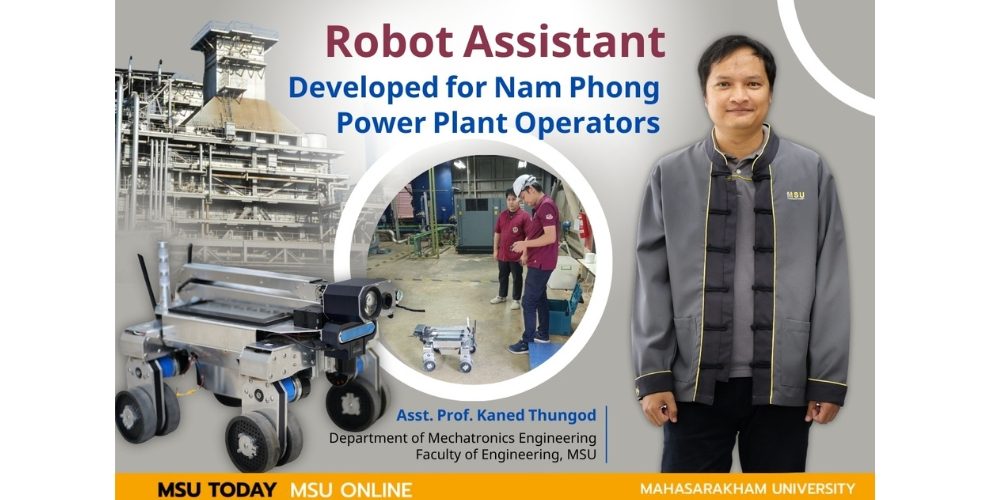Robot Assistant Developed for Nam Phong Power Plant Operators
Currently, power plants are considered vital for driving the economy and national development. However, large-scale power plants, such as Nam Phong Power Plant, face numerous challenges, including inspecting machinery in hazardous areas, occupational risks of personnel, and the complex and continuous maintenance of equipment. To ensure optimal performance and avoid potential accidents, power plants are looking for new technologies to address these issues.

The development of a robot assistant for operation workers is one approach with the potential to improve work processes at power plants. These robots can operate in hard-to-reach areas, withstand harsh environments, and perform tasks on behalf of humans in high-risk situations. By incorporating robotic technology into operational processes, it not only ensures worker safety but also reduces downtime, improves inspection efficiency, and lowers long-term costs. This research is led by Asst. Prof. Kaned Thungod, a lecturer in the Department of Mechatronics Engineering, Faculty of Engineering, Mahasarakham University.

Project Title
The development of assistant robots for operations staff at Nam Phong Power Plant
Research Background
Nam Phong Power Plant produces electricity using two combined heat and power units, with a total generating capacity of 710,000 kilowatts, operating 24 hours a day. ince the plant has been in operation for over 30 years, it relies on an outdated system that lacks online data transmission or sensors to monitor various components. Therefore, on-site personnel are required to inspect abnormalities such as pipe leaks, motor vibrations, valve positions, gauge readings, and manually record the status of key points for database logging. Due to the large area and multiple inspection points, the work is time-consuming, and the plant is subject to noise pollution and risks from steam leaks. Introducing robotic innovations to assist workers can improve convenience and safety, allow for more data collection per day, and promote the use of technology and innovation in the workplace. This serves as the starting point for the research project.

How the Robot Works
The robot can autonomously navigate the power plant based on a preset schedule, record data into a database, and issue alerts for parameters such as gauge readings, temperature, sounds steam leaks, and natural gas leaks.
Research Highlights
The robot operates autonomously according to a set program, with all components—mechanical, electrical, and control programming—designed and built by a research team at Mahasarakham University. Initial testing of the robot shows that it can function autonomously within the power plant and collect various data. Currently, the project is still in the testing phase at the power plant.

Challenges and Obstacles
Designing the robot to be user-friendly, without the need for programming and with minimal configuration is a challenging aspect of robot development, requiring significant time for testing and using the robot.

Target Audience for the Research
In addition to collecting data with various sensors in the power plant, it can also be applied in other industries that require monitoring or security, helping to reduce the risk of potential hazards.
Support from Mahasarakham University
The university provides the facilities and equipment in the laboratory for research.

Future Application of the Research in the Community
The research can be further expanded into a security robot for community use.
Future Developments of the Research
It can be further developed into an unmanned aerial vehicle (UAV) to operate from an elevated perspective.

Message to New Researchers Developing Useful Inventions for Society and Communities
Failure is part of the learning and development process, especially in highly challenging research.
Work Philosophy
If you don’t dare to fail you will never discover anything new.

ข่าวภาษาไทย (Original Thai Article): https://news.msu.ac.th/msumagaz/smain/readpost.php?mid=642
Editor: Jack Neill, Office of International Affairs



Leave a Reply